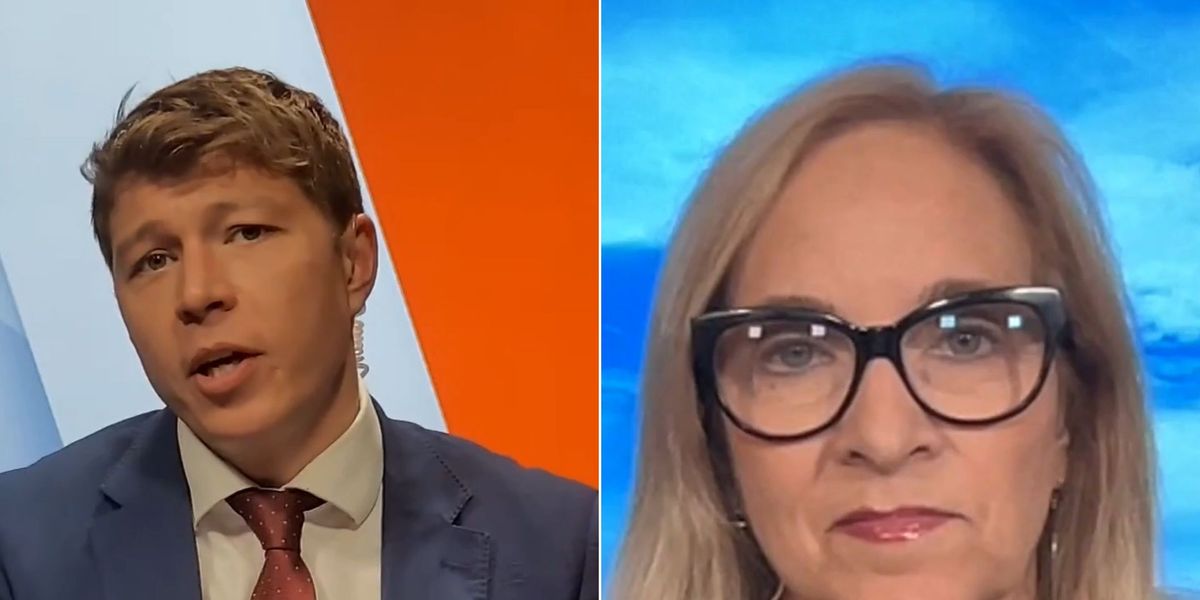The Strain of Migration: A Deep Dive into the Impact on American Hospitals and Public Services
In recent months, the United States has witnessed a significant surge in migration, particularly in urban centers like New York City. This influx has raised alarms among public officials and healthcare providers, as the strain on hospitals and public services becomes increasingly evident. Katie Gorka, a former adviser to the U.S. Department of Homeland Security, has been vocal about the challenges posed by this situation, emphasizing that the impact is not confined to New York but is felt nationwide.
The Overwhelming Pressure on Hospitals
Gorka recently spoke with GBN America, highlighting the alarming trend of migrants seeking basic healthcare services in emergency rooms. "They don’t have health care," she explained, "so they’ll go into our emergency rooms and into our hospitals for basic health care, and it’s overwhelming our hospitals and our schools here." This situation is particularly concerning as emergency rooms are designed for acute care, not as a substitute for primary healthcare services.
The influx of migrants without access to healthcare is straining hospital resources, leading to longer wait times and reduced quality of care for all patients. Hospitals are often left to shoulder the financial burden of providing care to those who cannot pay, which can lead to increased costs for taxpayers and a potential decline in the overall quality of healthcare services.
Educational Challenges in Local Communities
The impact of migration extends beyond healthcare; it is also affecting the education system. Gorka pointed to Fairfax County, Virginia, as a case study, where schools are struggling to maintain accreditation due to an influx of non-English speaking students. "Seven of our high schools now are at risk of losing their accreditation because they’ve been flooded with kids who don’t speak English, and they’re not able to maintain the test scores," she stated.
This situation poses significant challenges for educators, who must find ways to support students from diverse backgrounds while ensuring that all students meet academic standards. The increased demand for English as a Second Language (ESL) programs and additional resources can strain school budgets, further complicating the issue.
Financial Burden on New York City
The financial implications of the migrant crisis are particularly pronounced in New York City. The city projects spending a staggering $4.75 billion on migrant services in the 2025 fiscal year alone, according to its online asylum seeker funding tracker. This expenditure raises questions about the sustainability of such spending, especially as the city grapples with other pressing financial challenges.
Moreover, the migrant crisis appears to be impacting the criminal justice system. Reports indicate that migrants are involved in a significant portion of arrests in certain areas of the city. In Midtown Manhattan, for instance, up to 75 percent of recent arrests for crimes such as assault, robbery, and domestic violence have involved migrants, according to the New York Post. This trend has sparked discussions about the intersection of immigration policy and public safety.
Law Enforcement and Sanctuary Policies
The complexities of law enforcement in the context of immigration are further complicated by New York City’s sanctuary laws, which restrict cooperation with U.S. Immigration and Customs Enforcement (ICE). An NYPD spokesperson noted that officers are prohibited from inquiring about the immigration status of crime victims, witnesses, or suspects, making it difficult to track the impact of migration on crime rates.
Mayor Eric Adams has called for amendments to these laws, arguing that law enforcement needs the authority to coordinate with ICE to effectively address public safety concerns. This ongoing debate highlights the tension between protecting immigrant rights and ensuring community safety.
Health Risks and Public Health Concerns
The surge in migration has also raised public health concerns, particularly regarding the spread of infectious diseases. New York City has seen a notable increase in whooping cough cases, with data from the Centers for Disease Control and Prevention showing a 169 percent rise compared to the same period last year. Experts warn that crowded, poorly-ventilated migrant shelters create ideal conditions for the spread of illnesses.
Dr. Matt Harris, a physician at Northwell Health, emphasized the risks associated with communal living environments, stating, "Any communal environments where there are lots of people, where vaccination might not be optimized, is at risk." Health Commissioner Ashwin Vasan has previously cautioned that a significant portion of incoming migrants have not been vaccinated against diseases such as polio, raising further concerns about potential health risks to the broader community.
Conclusion
The challenges posed by the current migration crisis are multifaceted, affecting healthcare, education, public safety, and public health. As cities like New York grapple with the overwhelming influx of migrants, it is crucial for policymakers to address these issues comprehensively. Balancing the need for humanitarian support with the realities of resource limitations will require innovative solutions and collaboration across various sectors. The situation calls for a nuanced understanding of the complexities involved, as communities strive to navigate the implications of migration in a rapidly changing landscape.
